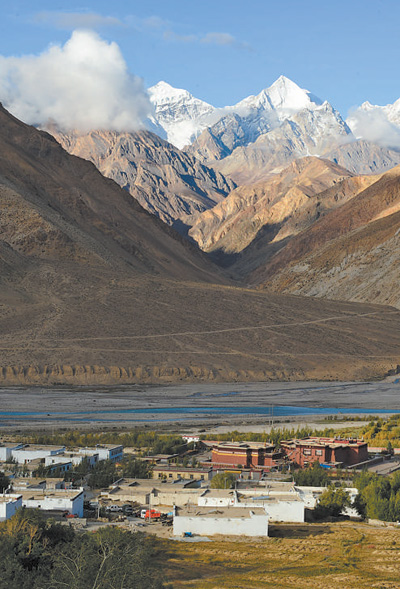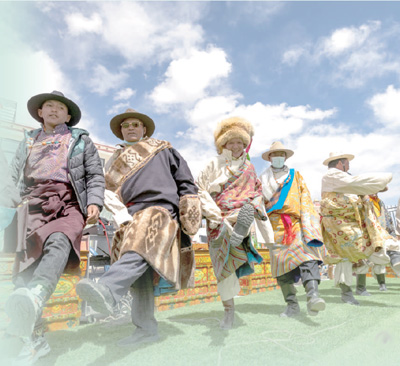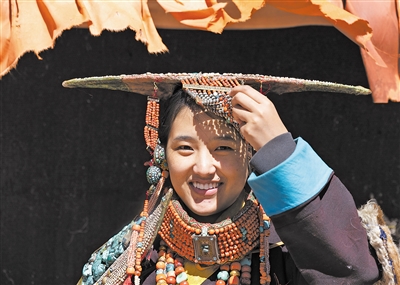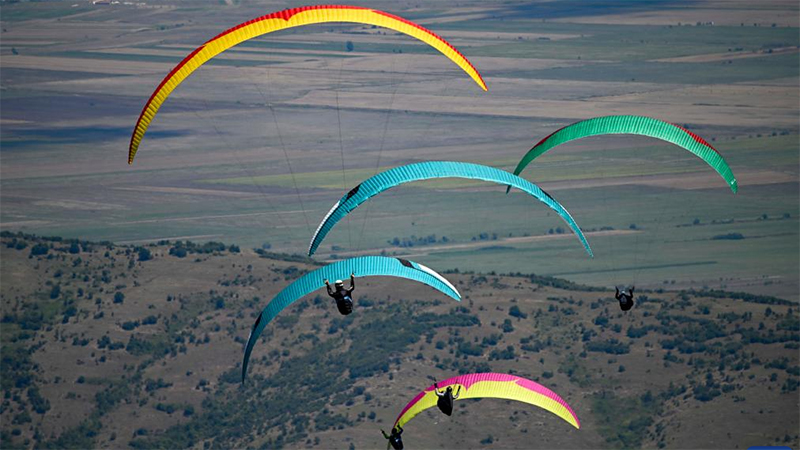Remote village in Xizang takes on new look after electricity supply stabilized

Photo shows Khorchak village, situated in Burang county, Ngari prefecture in Xizang Autonomous Region in southwest China. (People’s Daily/Gao Baojun)

Zang people perform the Guozhuang dance, a traditional dance, during a tourism and culture festival held in Burang county, Ngari prefecture in Xizang Autonomous Region in southwest China. (Photo by Chungdak Drolkar and Konchok Chophel)

Photo shows Mt. Gang Rinpoche, a famous scenic site located in the northern part of Burang county, Ngari prefecture in Xizang Autonomous Region in southwest China. (Photo by Chungdak Drolkar and Konchok Chophel)

Photo shows a woman from Khorchak village in a traditional “Xuan” costume. As the most representative clothing culture of Khorchak village, there are only eight sets of well-preserved “Xuan” costumes in the locality, with each set weighing over 20 kilograms. The “Xuan” costume is a national-level intangible cultural heritage in China. (Photo by Chungdak Drolkar and Konchok Chophel)

Children have fun inside a bilingual kindergarten in Khorchak village. (Photo by Chungdak Drolkar and Konchok Chophel)
Khorchak village is situated in Burang county, Ngari prefecture in Xizang Autonomous Region in southwest China. In 2019, it was given the title “traditional Chinese village”.
“Our village enjoys a history of over 1,000 years, and the ancient Khorchak Zang opera has been passed down from one generation to the next here,” said Gyatso, secretary of the Party branch in Khorchak village, who explained that before 2020, the village’s main sources of power were two small hydropower stations, and during winters, the village would frequently suffer power outages.
In December 2020, a power grid interconnection project in Ngari prefecture was put into operation, incorporating Ngari into the state grid. Thanks to this move, Khorchak village’s power outage problem was also solved.
Tenzinma is head of a cooperative in Khorchak village. “The members of the cooperative are all women, and we process Zanba, a traditional staple food made of roasted qingke barley flour and colza oil,” Tenzinma explained. The cooperative, which was established in 2014, is able to generate an annual profit of over 100,000 yuan ($14,780), and help over 50 local women increase their incomes.
“My mother used to be the head of the cooperative, and I took over that responsibility from her two years ago,” said Tenzinma, who recalled that in the past, her mother was always worried about the lack of stable power, and due to this problem, it would take four to five hours to finish a job that should have been completed in just two hours.
“In the past, due to frequent power outages, it was difficult to play videos for the kids. Nowadays, children’s songs and video programmes are always played during class breaks, allowing the children to know more about the outside world,” said a teacher who has worked at the kindergarten in Khorchak village for seven years.
In recent years, Khorchak village has taken accelerated and solid steps to improve the local living environment. It has not only said goodbye to its history of having no access to a stable power supply, but also received solid roads, tap water, a newly-built bilingual kindergarten, and a clinic, as well as radio, TV, cellphone and mobile network services. In addition, all local farmers and herders are now covered under the medical insurance system.
Photos
Related Stories
- Scenery of N China's Golog Tibetan Autonomous Prefecture
- Promo video for Third China's Xizang Internet Photography & Video Festival
- Residents in China's highest county relocated for better life
- China relocates residents in world's highest county for better life
- Tibet's 13th Regional Games starts with equestrian events in Lhasa
- Tibetan names inscribe changes, development in Tibet
- 9 young living Buddhas complete primary schooling in Tibet
- Former vice chairman of China's Tibet regional government expelled from CPC, office
- Third China's Xizang Internet Photography & Video Festival opens for submissions
- Interview: Impressed by Tibet's transformation, French writer urges fresh look at China
Copyright © 2022 People's Daily Online. All Rights Reserved.









